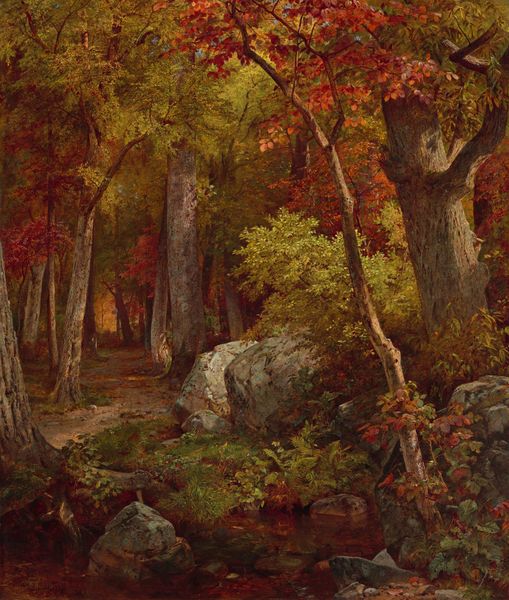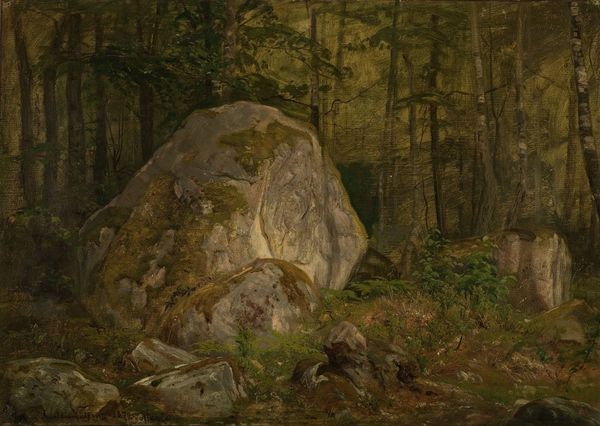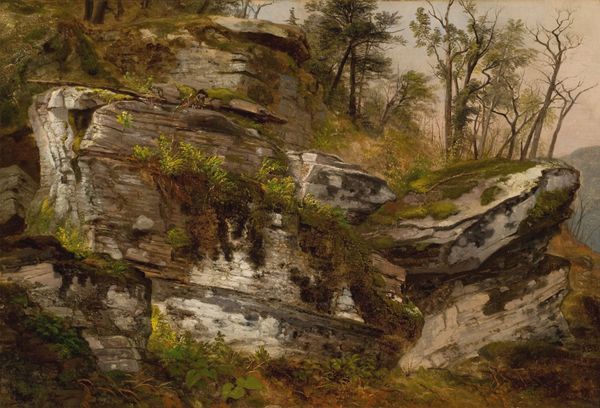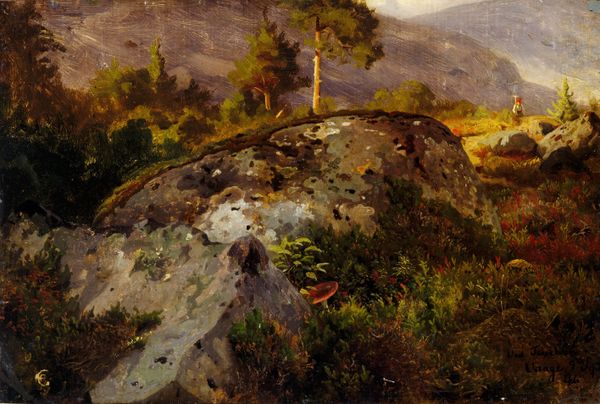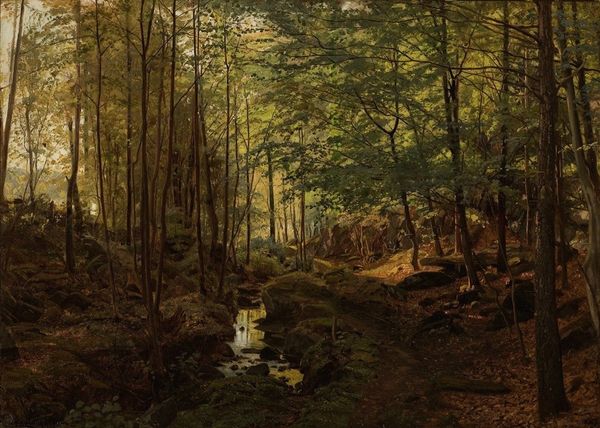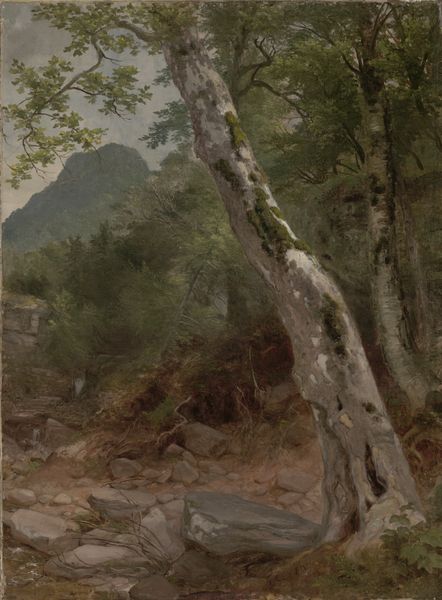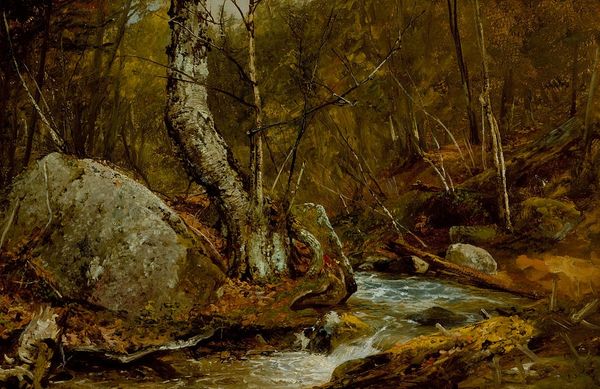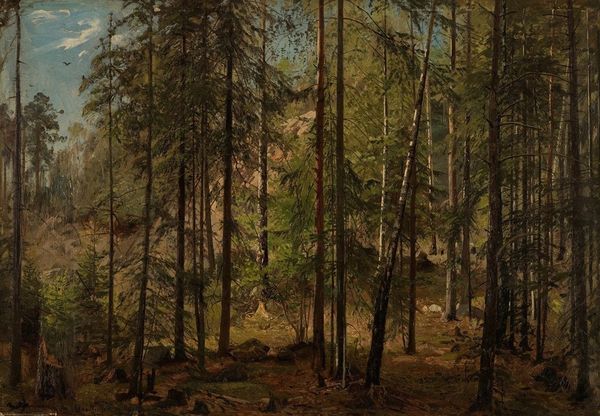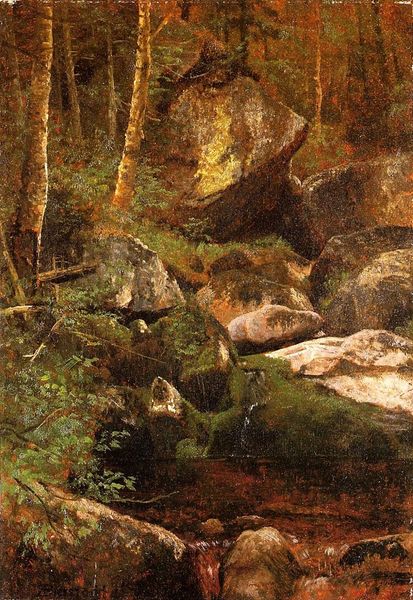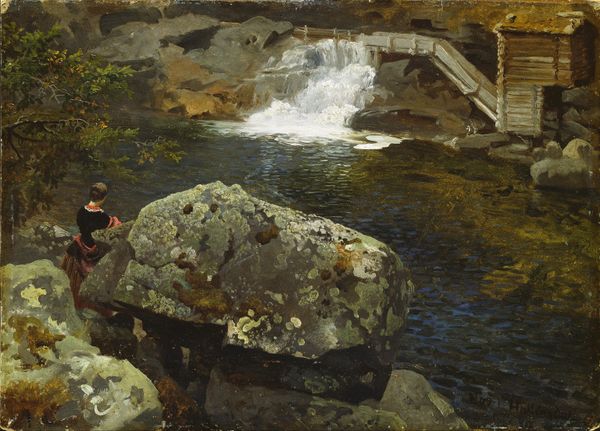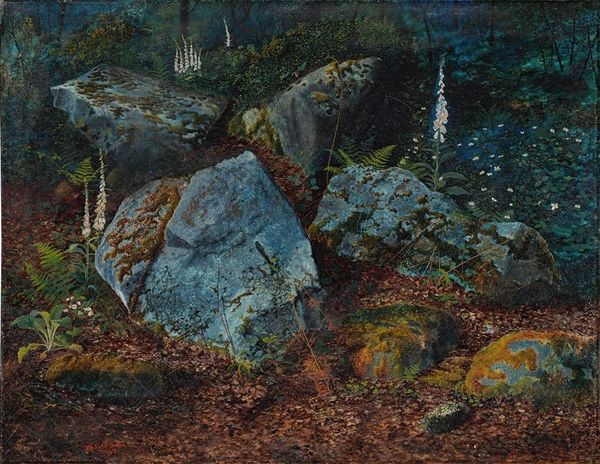
Dimensions: 61 × 45.7 cm (24 × 18 in.)
Copyright: Public Domain
Editor: Here we have Asher Brown Durand's "Study of Rocks in Pearson's Ravine," created around the mid-1850s. The detail in the rock textures is remarkable. What stands out to you in terms of Durand's choices? Curator: Considering the means of production, look at the deliberate application of oil paint. Durand isn't just representing rocks; he's showcasing the materiality of his craft. The tight focus on a seemingly unremarkable piece of nature, devoid of obvious picturesque qualities, draws attention to the physical elements and the labor involved in rendering them. Don’t you agree? Editor: Yes, I can see that. The lack of dramatic scenery forces you to consider the texture and layering of the paint itself, not just the scene. But what about its social context? Curator: This study speaks to the 19th-century interest in scientific observation intertwined with artistic practice. Artists, like scientists, were closely examining the natural world. But here’s the key: this intensive labor, representing these materials, was tied to emerging American industries, especially the extraction and use of these same natural resources. How do you think it connects to American landscape painting? Editor: So, by depicting this humble scene, he's really alluding to this growing national identity, shaped by interactions with the natural environment and its resources. Almost a celebration of manual labor. Curator: Precisely! It questions our ideas of art versus craft, and points to the consumption of land that was integral to the Hudson River School. Now, thinking about the context of the time it helps shift our perspective. Editor: I see! I’ll never look at a landscape the same way again.
Comments
No comments
Be the first to comment and join the conversation on the ultimate creative platform.
